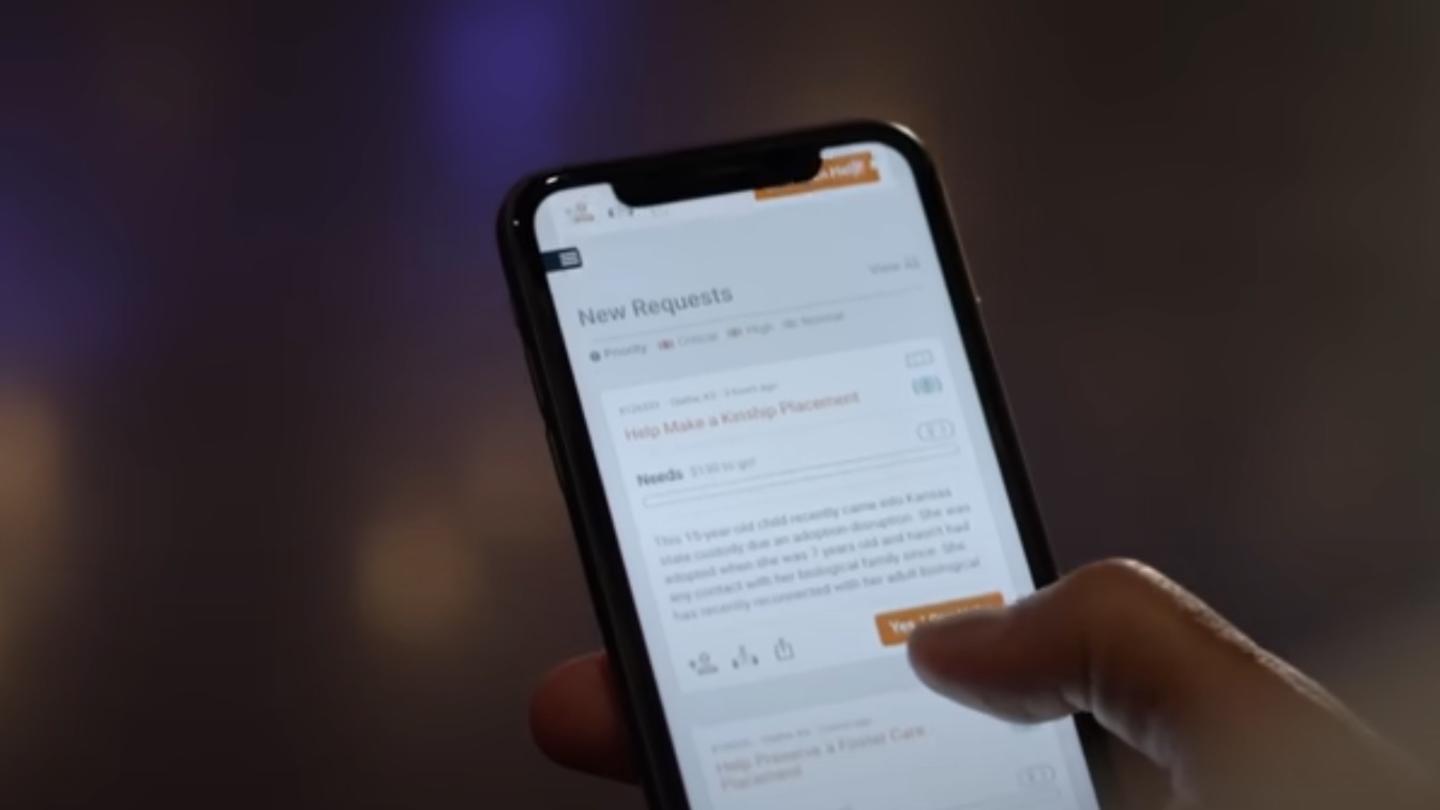More than three-fifths of children end up in foster care because of neglect. But what if their families had access to a larger network of people who wanted to help? Could these children avoid being caught within the country’s child welfare system?
Healthcare executive Adrien Lewis believed it was possible. Lewis and his wife became foster parents in 2011. A few years later, he launched CarePortal, an app that connects families in need with volunteers and donors in their community. A recent Wall Street Journal (WSJ) piece explores how this innovative nonprofit, a Stand Together grantee, is keeping children out of the foster care system.
Community connections keep families intact
In addition to fostering children, Lewis and his wife had been trying to recruit other couples to become foster parents. It was a challenging task, so why not also try to help families stay together in the first place?
Lewis knew there were people in the community who could help struggling families — if they only understood and could be connected to their needs. That is where the idea for CarePortal began.
“What would happen if you could expose people to the reality that a bed or crib or car seat, or paying a bill, things that were small, like 6-inch barriers,” Lewis told WSJ. “[It] would actually make a difference to keep kids out of foster care and reunify biological families.”
CarePortal was first introduced in Austin, Texas in 2014. In just a decade, it has helped more than 250,000 children avoid going into the foster care system.
“Uber is to ride-sharing what CarePortal is to care-sharing — community-based care- sharing.” CarePortal CEO Joe Knittig said. “Every day, we have 350 children that are actually being served by their neighbors through CarePortal.”
The app is now connecting families to communities of support in 64 markets, with plans to expand and help more children soon.
“We’re recruiting a broad coalition of the willing — local churches and other community leaders. They could be individuals or businesses,” Knittig said. “Anyone with a heart for the community and to serve. They’re our community responders.”
By keeping children from ever entering the child welfare system — and connecting them to caring, local volunteers — CarePortal creates a sense of community that will reap long-term benefits. Neglect erodes a child’s sense of self-worth and trust in others, leaving them deep scars. WSJ reports that roughly 80% of children in foster care are struggling with mental health challenges compared to 18-22% of other children, for example.
“CarePortal creates and accelerates human connection,” Knittig said.
Bottom-up solution to a big problem
“CarePortal at its essence is a request-response loop,” Knittig said. “On one side are social-service professionals, social workers and others who enter ‘real-time vetted needs of kids and families in crisis’ into the CarePortal app. On the other side are local churches and community responders who see the need and jump into action.”
According to WSJ, 50% of children in the foster system are concentrated in 5% of U.S. counties. This proximity makes the child welfare system ripe for a bottom-up solution — one where residents are the architects and facilitators of an effective solution.
“[The children] see their care coming from their moms, their dads, their grandparents, a local church, volunteers, a social worker, so it’s truly a bottom-up thing,” Knittig explained. “We’re an underground connecting platform. And it’s important to us that these kids have local heroes. We’re building capacity for local churches in the lowest-income ZIP Codes to be the solutions for their own families.”
This model is not only preventing children from entering the system, it is reducing pressure on the foster care system. A study in a three-county area in Florida hit by the opioid epidemic found there was a 60% reduction in the number of children entering foster care when CarePortal was used to connect families with a community-based support system.
“Social workers are literally entering: What are the things that are needed for me to not remove this child?” Knittig said. “And some of them are further upstream like: OK, I’m not ready to remove the child, but to strengthen this family so they don’t get to that point.”
Lewis, CarePortal’s founder, said he hopes his tool can help other groups of people, too — veterans, the elderly, people with disabilities, or people released from prison who, like children caught in foster care, often find themselves isolated.
Lewis said, “The same technology can work for all of the most vulnerable.”
Read the full Wall Street Journal column.



